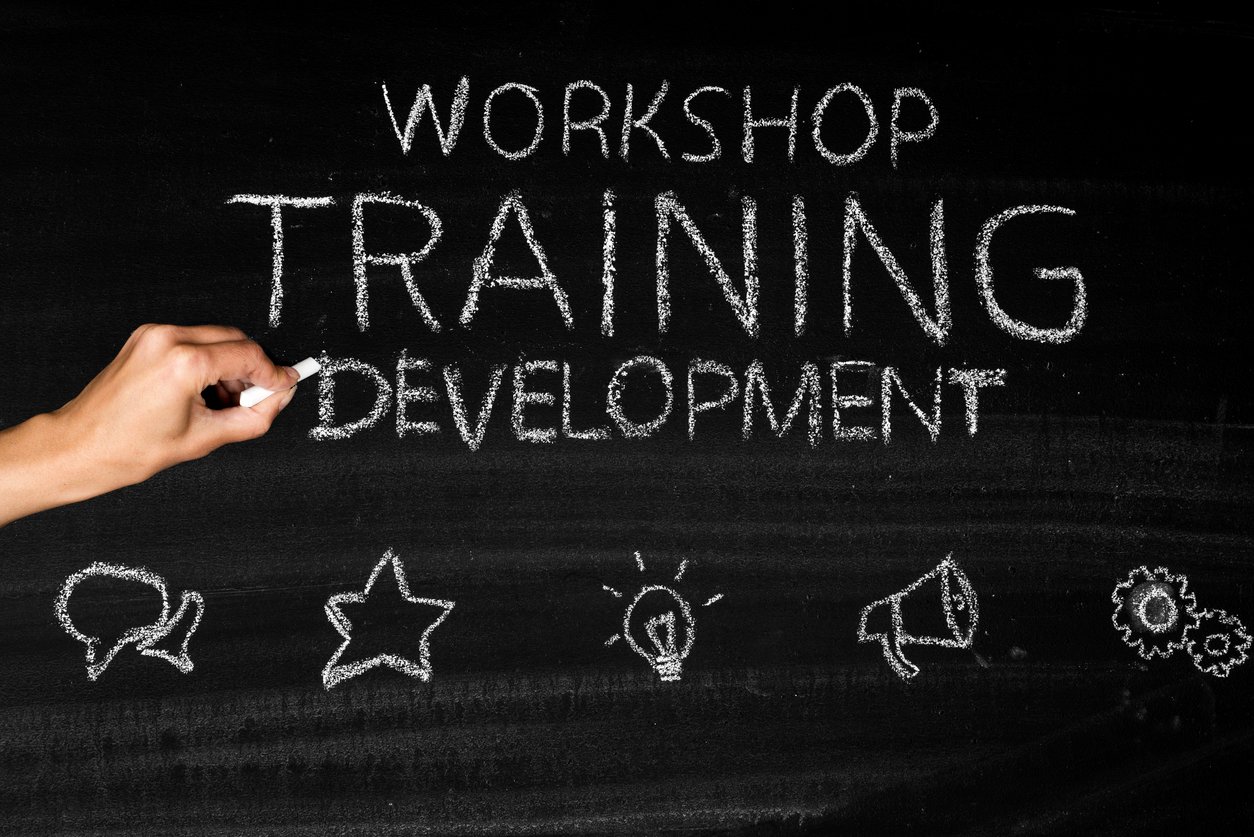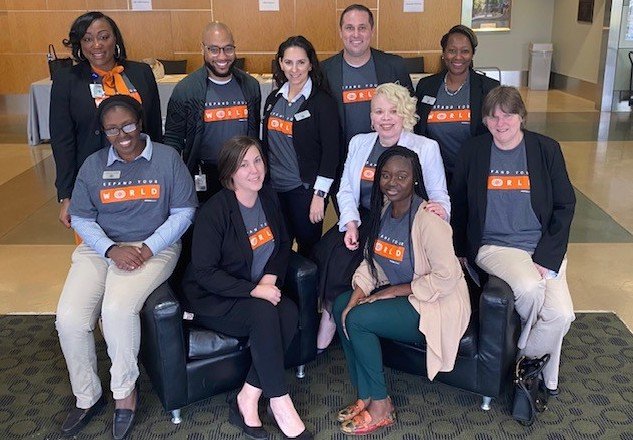
January 2021 marks the fifth anniversary of the annual For-Teachers-by-Teachers Conference presented by our district, the Houston Independent School District. This conference allows the teachers who make up our secondary social studies teacher leader corps program the space and time to authentically exhibit their new learning content, instructional strategies, district instructional resources, and the skills needed to successfully create and execute professional development.
Don’t worry. Before we go any further, I will address what I know many of you are wondering: What is a teacher leader corps program? A teacher leader corps program is a multiyear professional development opportunity that helps a teacher cadre of learners develop in areas driven by an organization’s vision or purpose. Our fifth cohort joined the program in fall 2020, and as such, this is a good time to stop and reflect on our origins, considerations, and vision for the future.

Photo: iStock by Getty Images
How Did We Get Here?
By Montra Rogers
The year 2015 was a watershed one for our district’s secondary social studies department. January 2015 marked a transition in leadership. I became the new director of secondary social Studies. In May of the same year, the entire secondary curriculum and development department underwent a reorganization. This reorganization left us with a total of six instructional coaches, who were tasked with supporting about 1,089 secondary social studies teachers, compared to the eighteen to twenty instructional coaches assigned to math and English language arts.
Next, we kicked off a district literacy initiative with the hopes of improving literacy outcomes of our middle school students. This initiative would require our teams to deliver a great deal of professional development to leaders and teachers alike. While we were excited about the possibilities, we scrambled to develop a training plan that we could execute with such a limited staff.
We also we went through the tedious process of adopting new instructional materials. The original selected resources did not align with the district’s philosophy regarding the integration of technology for instructional purposes; at that time, we were in the process of one of the largest one-to-one laptop initiatives in the nation. Every high school student received a district-issued laptop.
As a result, we went back to the drawing board and selected Social Studies School Service’s Active Classroom. We began with a one-year subscription. It was a trial of sorts, and the goal was to fully adopt the resource the following year. Although we held professional development sessions that focused on these materials, teachers did not buy into this resource. They were disenchanted. In truth, teachers struggled with the notion of a database of curated resources; they felt vulnerable without a traditional textbook. We needed to rethink our vision and approach regarding this resource, and fast!
Everything happened simultaneously, and these conditions forced us to rethink a number of things. First, we needed to become more intentional about creating a sustainable secondary social studies program. Next, we began thinking of ways to build capacity in our teachers so that they would be able to support district initiatives at the campus level. Finally, we had to find a way to help teachers embrace our newly adopted instructional resource, Active Classroom. As a result of our reflections, we, along with our Social Studies School Services partner, Jason Ihlenfeld, began talking about relaunching our professional development program. Of course, we would still offer traditional sessions, but we would also create a teacher leader corps program. This ongoing teacher training program includes opportunities for guided practice, coaching and feedback, follow-up, monitoring, and the opportunity to authentically exhibit new learning (Kent, 2004; Danielson & McGreal, 2000; Littky & Grabelle, 2004). Our areas of focus are as follows:
- Content development
- Instructional practice
- Facilitation of professional development
- Instructional coaching
- Leadership

The Role of Active Classroom
A characteristic of teacher leaders is their ability to support district initiatives, and one such initiative is our social studies resource, Active Classroom. The teacher leader corps program, and ultimately the For-Teachers-by-Teachers Conference, grew from the need to support teachers with this district-adopted resource. As such, teacher leaders in the first and second year of the program must select a series for the Active Classroom database to create a professional development session.
The following details how our partnership with Social Studies School Services helps us accomplish our intended goal. Teachers will attend four two-hour sessions geared toward preparing them for the conference, which is held each January. The first two sessions are led by Social Studies School Services staff. During the first meeting, participants are introduced to adult learning theory. Social Studies School Services provides an avenue through which teachers receive a “microcredential” in this area. Microcredentials are digital certifications that verify an individual’s competence in a specific skill or set of skills. The second meeting is led by Jason Ihlenfeld. He walks participants through the various series, reminding us of some things and introducing us to what is new. After this, participants are given the opportunity to research and explore on their own. The final two meetings are led by district personnel. During the third meeting, the year-one cohort works with participants to create facilitator guides. These guides include the information, strategies, and resources needed to deliver professional development trainings. The goal of the final meeting is a peer review session. Participants receive feedback that will help them prepare for the upcoming session. We are at the five-year mark. This is a time of reflection with the intent of planning for next steps. The following are some considerations worth mentioning.
Things to Consider When Adopting a New Social Studies Program
- Articulate your why. Clearly convey your why; what are you building, and why is it important, and what is your role in carrying out the vision and mission of the program? A clearly articulated why will entice others to join your cause.
- Market your program. Communicate all aspects of your program with both district stakeholders and outside partners alike. In addition to other methods of communication, use the power of social media to get the word out.
- Remember that will is more important than skill. An individual’s desire to grow is more important than their initial talent. The very purpose of the program will grow teachers if they are willing to do the work. This will shape your philosophy regarding recruitment and the notion of the perfect candidate.
- When it comes to funding, think outside the box. We have noticed that content leaders fail to consider how the program fits within the larger scope of district initiatives. Doing so limits funding sources and ultimately programing.
- Document the process. Create an organizational structure that will allow you to archive and organize your process. This will help you to easily locate forms, documents, emails, and so on that can be used as a model for others to begin programs of their own.
- Reflect for action. While you will most definitely celebrate the successes of the program, you must be courageous enough to ask yourself the tough questions as well—i.e., how many people chose not to return to the program, and why did they choose not to return? Collect data, surveys, artifacts, interviews, and focus groups regularly. Use the data to plan for next steps.

Where Are We Going?
By Jamie Filipow
In 2019, I—a former teacher leader—became the new director for secondary social studies. Dr. Rogers had received a promotion and been named the officer of secondary curriculum and development. My new position included overseeing the teacher leader corps. As a former teacher leader, I had an intimate understanding of how the corps operated. However, it was now time for me to put the skills I had developed into action as the new leader of the department and continue the work that had begun in 2015. As we continue our work with the teacher leader corps, there are a few things we hope to accomplish as we move ahead:
- Expand microcredentialing. We plan to continue with and expand the microcredentialing of teacher leaders. Depending on the topic chosen, microcredentialing could connect to any of our five areas of focus. Moving forward, opportunities for microcredentialing could include blended learning, disciplinary literacy, or instructional coaching. It may even be possible for teacher leaders to choose their own topic in which to become “badged.” This will allow our teacher leaders to develop additional sets of discrete skills to foster their professional growth.
- Develop our mentoring program.We want our experienced teacher leaders to serve as mentors to incoming members. While this does happen informally, it is not as systematic as we desire. We would like to develop a plan to continue to build capacity of leaders. For example, members of our year-one cohort could be partnered with newer teacher leaders for an entire academic year. As mentors, they would assist with the creation and facilitation of professional development—which aligns with one of our areas of focus. This would not only serve as additional support for new members but also further develop the skills of experienced teacher leaders.
- Create a curriculum and assessment Summer Institute. Finally, we hope to create a two-week summer institute aimed at developing the content and pedagogical knowledge of our teacher leaders. The institute would set the tone for the year—ensuring that all teacher leaders understand the purpose of the corps and expectations regarding the transfer of the knowledge gained. During the institute, teacher leaders could engage in book studies and lectures with content experts. They would work in smaller groups to dive into cutting-edge best practices for social studies instruction. This time would also serve to solidify their roles as teacher leaders within the district.
Next year will be the sixth year of our teacher leader corps! When I think back to 2015 and how this journey began, I must admit I am delighted with our progress. However, I know that if I close my eyes and dream big, there are countless opportunities for us to grow and improve the social studies teacher leader corps.
See how Active Classroom can aid your classroom with thousands of interactive activities
Access a free trial and start engaging students today
Dr. Montra L. Rogers, Officer of Secondary Curriculum, Houston Independent School District
Mrs. Jamie L. Filipow, Director of Secondary Curriculum and Development – Social Studies, Houston Independent School District
